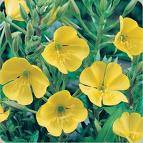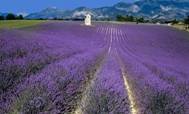| Kingdom | Plantae |
| Division | Magnoliophyta |
| Class | Magnoliopsida |
| Order | Myrtales |
| Family | Onagraceae |
| Genus | Oenothera |
| Species | O. biennis |
| Binomial name | Oenothera biennis |
Other Common Names:
The other common names for the herb evening primrose are donkeys' herb, fever plant, field primrose, gardeners' ham, german rampion, King's-cure-all, night willow-herb, scabish, scurvish, tree primrose and war poison.
History
The generic name is derived from oinos (wine) and thera (a hunt), and is an old Greek name given by Theophrastus to some plant, probably an Epilobium, the roots of which were eaten to provoke a relish for wine, as olives are now; others say it dispelled the effects of wine. In England, during the 17th century, this herb was called the "King's cure-all" by herbalists, and it was considered a panacea for treating most ailments. The seed spread on ships and European settlers took the root back to England and Germany, where it was introduced as food and became known as German rampion.

Description
Evening primrose is a biennial plant where the stem is erect, stout, and softly-hairy. The plant has a fairly short blooming period, the individual flowers are only around for a day or so, they first open in the evening (hence the name) and are said to glow in the dark, unfortunately they wither and die the following day. The seed pod is an oblong, hairy capsule which contains the precious seeds. The leaves are narrow and tapered, alternate, lance-shaped, mostly seated on stem, entire, or obscurely toothed and are 3 - 6 inches long. Most varieties have a silvery sheen due to the many short hairs on the surface of the leaf. The root is biennial, fusiform and fibrous, yellowish on the outside and white within.


Bumblebees now hurry in, and an occasional humming bird takes a sip of nectar. Toward the end of summer, when so much seed has been set that the flower can afford to be generous, it distinctly changes its habit and keeps open house all day.
Range
The evening or tree primrose is said to have originated in Mexico and Central America some 70,000 years ago. It subsequently spread right across the North American continent and from there came to Europe. It can now be found growing all over the world in temperate climates.
Habitat
The evening primroses are often naturalized on river-banks and other sandy places in Western Europe. It is often cultivated in English gardens, and is apparently fully naturalized in Lancashire and some other counties of England, having been first a garden escape. Thus its preferred habitats are roadsides, dry fields, thickets and fence-corners.
Cultivation
The Evening Primrose will thrive in almost any soil or situation, being perfectly hardy. It flourishes best in fairly good sandy soil and in a warm sunny position. Thus it prefers acid, neutral and basic (alkaline) well-drained, sandy soils and requires full sun; however it will thrive in almost any soil or situation, being perfectly hardy. If planting by seed it requires light to germinate so they should be scattered on the soil surface and tamped lightly. Sow the seeds an inch deep in a shady position out-doors in April, transplanting the seedlings when 1 inch high, 3 inches apart each way in sunny borders. Keep them free from weeds, and in September or the following March, transplant them again into the flowering positions. As the roots strike deep into the ground, care should be taken not to break them in removing. It takes 15-30 days for propagation. Seeds may also be sown in cold frames in autumn for planting out the following year.
The seeds ripen from August to October and should be collected when ripe and pressed for oil. To be effective the seeds should contain 30-40% moisture. Pick the flowers in full bloom, but be quick as they die off the next day. Gather the leaves and stem "bark" when the flowering stems have grown. Dig up the roots in the second year. The seeds and leaves can be dried. It provides a wonderful splash of summer colour in anyone's garden and the flowers attract pollinating insects, along with moths and bats. The seeds are also a good food source for birds.
Parts Used
Generally the leaves, flowers, seeds and roots are in common medicinal and commercial use. The bark is peeled from the flower-stems and dried in the same manner as the leaves, which are collected in the second year, when the flowerstalk has made its appearance.
Flowering Season
The flowers of the evening primrose is generally said to flower between june to october.
Pests and Diseases
No major pests insect or disease pests were observed in our field trials, though the plants appeared to lack winter hardiness, and/or succumb to root diseases in the second year.
Medicinal Applications


• The herb as a whole is used in the treatment of gastro-intestinal disorders, whooping cough and asthma. A tea made from the roots is also used in the treatment of obesity. Many modern herbalists use an extract in cough remedies. The herb has been shown to hinder platelet aggregation (stickiness of the blood).
• The constituents of evening primrose gamma-linolenic acid and linoleic acid are said to aid in the reduction of pain and inflammation.
• Taken internally, the oil is said to have an effect in lowering blood pressure and in preventing the clumping of platelets, it has been recommended in treating cirrhosis of the liver and is most commonly taken for premenstrual problems, including tension and abdominal bloating.
• Some medical practitioners believe that multiple sclerosis (MS) sufferers may benefit from internal treatment with the oil, as may people suffering from rheumatoid arthritis.
• More specifically, EPO is beneficial in treating forms of dermatitis (i.e. eczema), breast pain resulting from PMS (premenstrual syndrome), menstrual cramps, hot flushes, high blood pressure and cholesterol, diabetes, cardiovascular disease, and chronic fatigue syndrome.
• Capsules of Evening Primrose oil have been approved for use in Germany in the treatment of atopic eczema.
• Native Americans used root tea for obesity, bowel pains, poulticed root for piles, bruises, and was rubbed on muscles to give athletes strength.
Commercial Applications
• The leaves can be cooked and eaten as greens.
• The roots can be boiled like potatoes and allegedly taste like sweet parsnips.
• The flowers are sweet and can be used in salads or as a pretty garnish. The young seedpods can be steamed and the ripe seeds can be roasted and used on bread or in salads.
• The oil from the seed is added to toiletries and cosmetics.
• A finely ground powder made from the flowering stems is used cosmetically in face-masks to counteract reddened skins.
• A yellow dye can be obtained from the flowers.
According to astrological reports the different colours of the primrose family is said to have different effects.




Culpeper - states that in a dark night, when no objects can be distinguished at an inconsiderable distance, this plant, when in full flower, can be seen at a great distance, having a bright white appearance, which probably may arise from some phosphoric properties of the flowers." ( King's American Dispensatory , Felter and Lloyd, 18th Edition,1898).
Millspaugh - states that the petals do emit light on a dark night is not fanciful; still it is not due to a property of giving out spontaneous light (phosphorescence), but to a process of storing up sunlight during the day, and retaining it at night--a property identical with that exhibited by hepar sulphuris calcarea (calcined oyster shells), and the sulphides of barium and strontium." ( American Medicinal Plants , reprinted 1974).
Flower essences of the evening primrose are especially beneficial for fear of parenthood, emotional repression, and/or feeling rejected and unwanted.